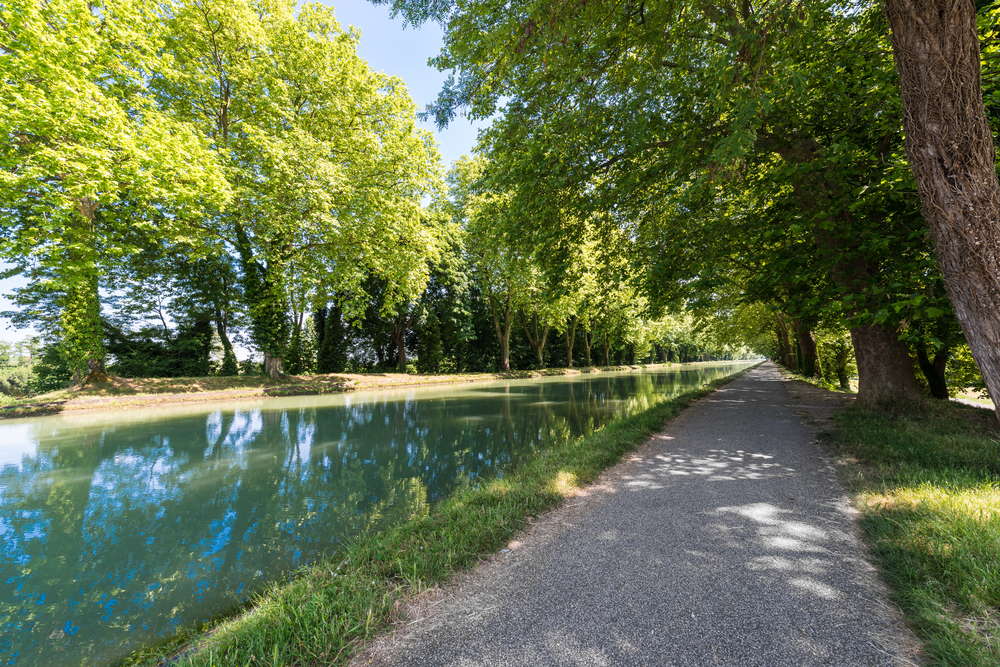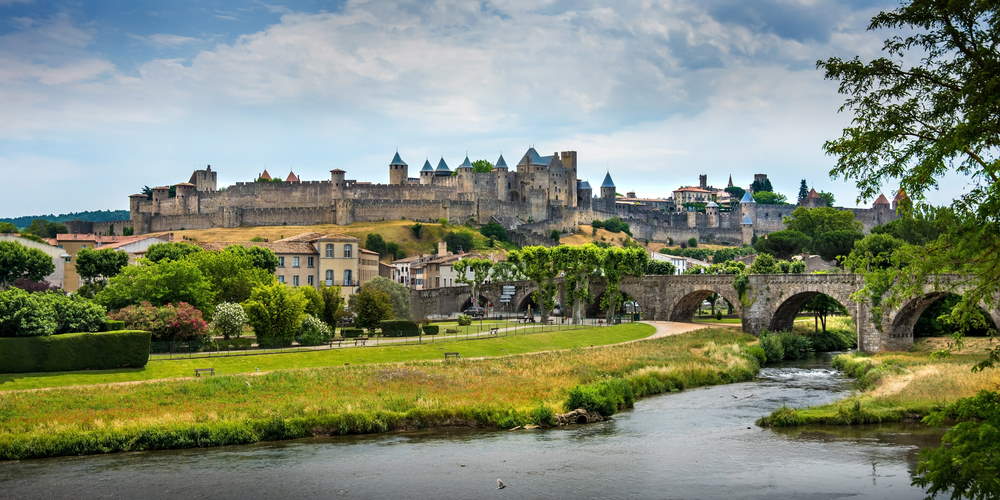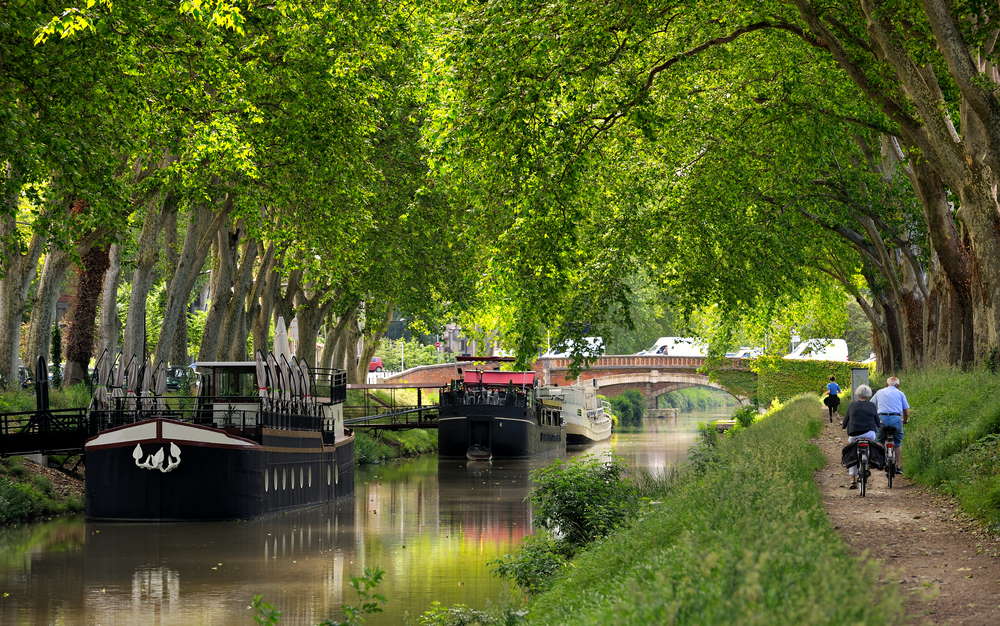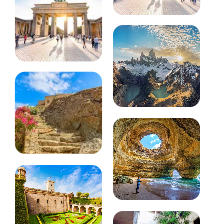Canal du Midi: visits, walks and discoveries

The Canal du Midi is one of the oldest structures in Europe still in use. This titanic work was dug by the strength of the arms of the workers of the 17th century, who had no tools other than shovels and pickaxes to dig the 242 km of canal. An essential means of transport for passengers and goods until the 1980s, pleasure boating is now the only activity permitted on the Canal du Midi, much to the delight of tourists from France and beyond! History, gastronomy, walks, navigation… Here’s everything you need to know for a wonderful stay on the Canal du Midi.
What is the most beautiful part of the Canal du Midi?
It would seem, according to the general opinion of tourists, that Carcassonne is the name that comes first in most people’s minds. It has to be said that this world-famous medieval city has something to make you dream, with its truly impressive architectural ensemble that makes a visit to this site absolutely magical, whether you’re 7 or 77! In a perfect state of preservation, lovers of history, architecture, storytelling and photography will easily find something to keep them busy in Carcassonne. And let’s not forget the gourmets who will appreciate the culinary specialities of this region, which has no shortage of imagination when it comes to dining out!

How to discover the Canal du Midi
There are many ways to discover the Canal du Midi, depending on the time you have available and your interests. Here are just a few:
1 – The charter boat
A peaceful way to discover the Canal du Midi, at the leisurely pace of a boat: landscapes, locks, buildings, villages, vineyards… You don’t need a boating licence to hire one, and it really is perfect for sharing good times with family or friends. You moor your boat when you want to visit, take photos or go hiking. Cyclists can follow the barge in the shade of the plane trees… And if you don’t feel like cooking, there’s no shortage of restaurants along the canal! History, heritage and gastronomy are all on offer.

2 – Barge trip
Set off for the day on a lunch cruise or a simple trip lasting a few hours to discover the Canal du Midi on board a barge. In a group or as a family, discover the history of the canal and its remarkable landscapes.
3 – By bike
Even in midsummer, the Canal du Midi is a pleasant place to cycle, thanks to the plane trees that line the route. For much of the route, you can cycle in the shade of these trees, some of which are over a hundred years old.
4 – The villages of the Midi
We love these little villages, full of details so typical of every region of France. And the villages along the Canal du Midi are no exception.
5 – The vineyards
It would be a shame to visit the Canal du Midi without sampling the region’s 3 AOC wines: AOC Minervois, AOC Languedoc and AOC Saint-Chinian. The winemakers will be delighted to let you taste their wines and talk about their trade.
6 – Natural heritage
It is rich and varied all along the Canal du Midi, here are a few examples:
The Radoub dock in Toulouse
Since the 19th century, its slipways have been home to boats in need of repair, even barges, thanks to its 30 m length.
The wash-house at the lock in the village of Montgiscard
One of the last remaining wash-houses on the Canal du Midi.
The lock at Négra
A former stopover for travellers, where they could eat, sleep, pray and refresh themselves, this lock has been a real point of interest since the 17th century.
Castelnaudary
See Castelnaudary and taste its famous cassoulet… A gourmet break is a must, to sample the real cassoulet from the south-west! To help your digestion, take a short trip to the Grand Bassin and the 4 locks of Saint-Roch for a lovely view of the town.

Carcassonne
A mythical medieval city that needs no introduction, with its 52 towers, 2 concentric walls and 3 kilometres of ramparts.
The Répudre canal bridge
It is the second navigable canal bridge in the world and the first in France, and the only one built by Riquet rather than Vauban.
The Orb Canal Bridge at Béziers
This canal bridge has made it possible to tame the vagaries of the river, which is low in summer and floods in winter. Its rectangular shape is unique along the Canal du Midi.
Where does the Canal du Midi begin in Toulouse?
The Canal du Midi starts in Toulouse at the Ponts Jumeaux. 241 km long, it takes you as far as Marseillan in the Hérault, where, linked to the port of Sète, it ends its journey in the Mediterranean.
History of the Canal du Midi
The canal links Toulouse to the Mediterranean, and took 14 years to build between 1667 and 1681. In 1667, Pierre-Paul Riquet, then collector of the salt tax in Languedoc, took up this project, which had been on the minds of all the sovereigns since antiquity. But it wasn’t all plain sailing. With the help of a surveyor specialising in hydraulics, François Andreossy, they set about building the world’s largest dam to carry water to the stretches. Up to 12,000 courageous workers, armed with shovels and pickaxes, dug these sections for almost 14 years, with all the risks that entailed, particularly when explosives were used. They were mainly local farmers. The women were not to be outdone, clearing the earth from the banks. Despite all these efforts, the canal showed certain weaknesses and silted up, rapidly compromising navigation. It was the architect Vauban who took charge of the project from 1686 to 1694, in order to consolidate the structure wherever necessary. He built aqueducts, enlarged the Saint-Férréol reservoir and bored the Cammazes tunnel, better known as the “Vauban vault”. The train would come to put an end to this fine maritime history, which had made the region rich thanks to the export of cereals.
Practical info: it takes 7 days to get from Toulouse to Sète by boat.
200 audioguided tours for cities all around the world
Download
